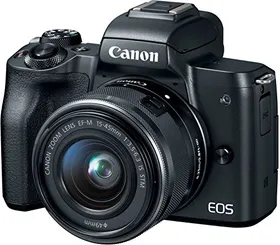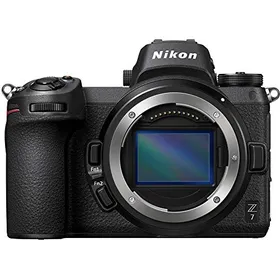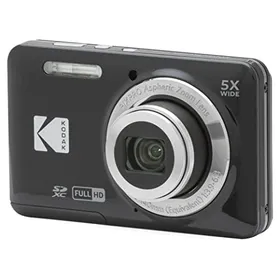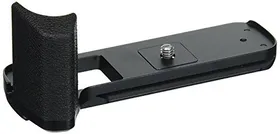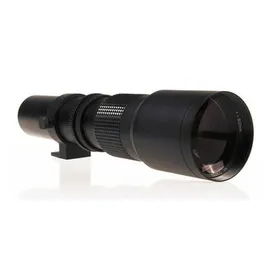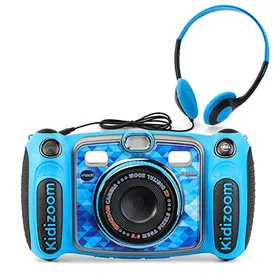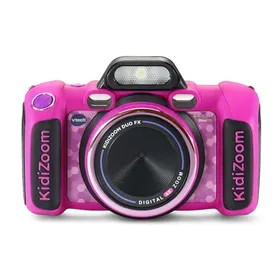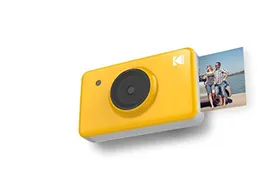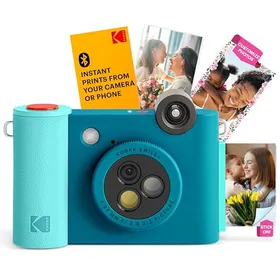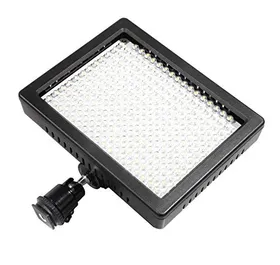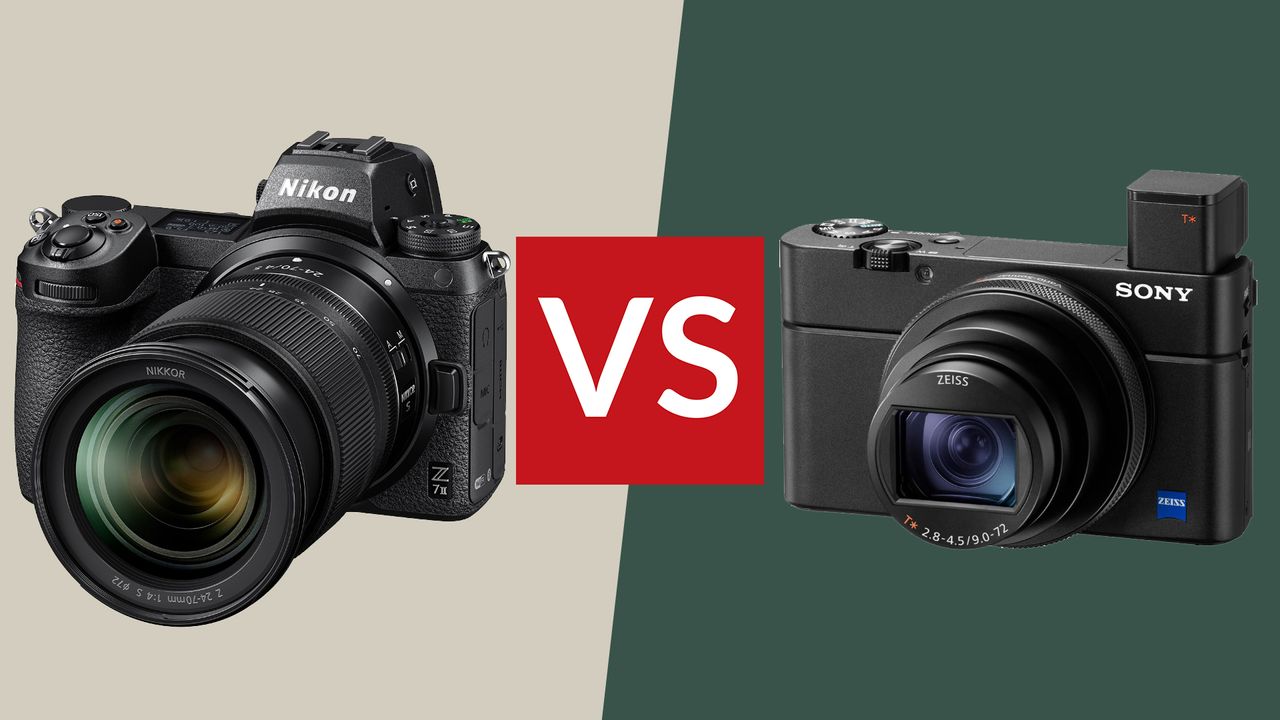

Compact cameras and mirrorless cameras aren’t two different types of cameras. In fact, the term “compact cameras” can encompass some mirrorless cameras (the term “mirrorless” simply means not having a mirror in front of the camera sensor.)
In a broad sense, the best mirrorless cameras are compact in nature, and a big part of the reason why they have taken over the market is that they are smaller, lighter, and more portable alternatives to the bulkier the best DSLRs. In a more specific sense – if by “compact cameras” you mean point-and-shoots – some mirrorless cameras have a fixed lens and a smaller sensor, which puts them more in the category of point-and-shoots.
Meanwhile, there are some compact point-and-shoot cameras that have a larger sensor (a micro four-thirds, perhaps, or even an APS-C) and come with features you’d typically find on mirrorless cameras like an electronic viewfinder.
Still, if we were to generalize them, most mirrorless cameras have interchangeable lenses, larger sensors, and more advanced features than the best compact cameras. And, most compact point-and-shoot are designed to fit in your pocket and have a simpler operation meant for fast and easy shooting. So, it’s still important to make that distinction, if only to help you decide what camera to invest in. Let’s dig in further.
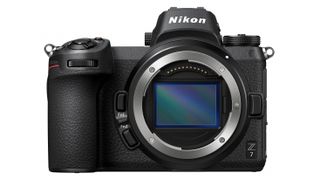
Compact camera vs mirrorless: Sensor
If you’re trying to decide whether you should go for a compact point-and-shoot or get a mirrorless camera instead, the first thing to consider is the sensor. Generally, the bigger the sensor, the bigger the resolution, the better the light performance, and the wider the dynamic range. This means that you’ll yield higher quality images with larger sensors.
Compact point-and-shoot cameras usually have the smallest of the bunch, some of them fitted with sensors smaller than 1.0 inch. On the other hand, mirrorless cameras tend to have bigger sensors. In fact, these days, a chunk of the best mirrorless cameras boast APS-C and full-frame sensors while a small chunk touts medium format sensor sizes for folks who either need to produce massive prints or simpy appreciate that medium format goodness.
Bear in mind that there are APC-S and micro four-thirds cameras out there that are considered point-and-shoots due to their fixed lens, which we will get to in the next section. However, it still stands that you’ll typically get a larger sensor with a mirrorless camera.
Sign up to the T3 newsletter for smarter living straight to your inbox
Get all the latest news, reviews, deals and buying guides on gorgeous tech, home and active products from the T3 experts
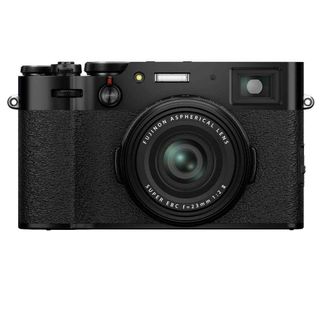
Compact camera vs mirrorless: Lenses
There’s a reason why compact point-and-shoot cameras are called that – because all you need to do really is to point and shoot. You don’t have to adjust your aperture or shutter speed or change lenses. In fact, without looking at the sensors, this is the quickest way to tell whether or not a camera is a compact point-and-shoot or a mirrorless system.
Unlike point-and-shoots, which often have a fixed lens, mirrorless options tend to be interchangeable lens cameras. Again, this isn’t a hard and fast rule. Some mirrorless cameras, like the Fujifilm X100V and the Ricoh GR III, are fixed-lens systems. However, most point-and-shoots do not have detachable lenses while most mirrorless cameras do.
Why does this matter to users? Interchangeable lens systems are more versatile and essentially widen your creative reach. Since they’re built to be compatible with a host of lenses – some like the Canon EOS R/RP and Nikon Z6/Z7 cameras were even designed to be compatible with most lenses in their respective manufacturer’s lens catalogue thanks to their own lens adapters – you can have several different focal lengths and apertures at your disposal.
If you want to take portraits with creamy bokeh, for example, you can get a 50mm or an 85mm compatible lens with a wide aperture. If you’re more of a wildlife photographer, you can invest in a 200–500mm telephoto lens. If you like taking landscape photos, you might want a wide-angle lens with a range of aperture settings.
All these and more can be at your disposal because camera manufacturers usually make sure that every type of lens is available for each system or lens mount. That is if you’re willing to spend money on additional lenses. Even if you don’t have the budget for additional lenses now, you can always save up for it and make the investment later on.
With point-and-shoots, you’re stuck with the same lens, which means that you also only have that lens’ focal length, zoom range, and available apertures at your disposal. Creatively speaking, you are a lot more limited as to the type of exposures you can take. You might not be able to zoom as much, and you might not have a wide aperture available at a certain focal length. If, later on, you’d like to have a bit more flexibility in your creative exposures, you’re going to have to upgrade to a different camera.
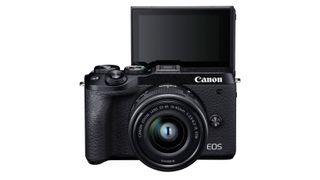
Compact camera vs mirrorless: Size, design and handling
The one advantage that compact point-and-shoots do have over mirrorless cameras is their compactness. Mirrorless cameras have been designed to be sleeker, lighter, and more portable than DSLR and traditional medium format cameras. However, because they do have larger sensors and more advanced features, it’s harder for them to get down to the size of typical point-and-shoots. That’s without mentioning the added space and weight from their lenses.
Compact point-and-shoots are often pocket-sized and have a built-in retractable lens. In fact, you can slip some of them into your dress or jeans pocket. This makes them extremely portable, and ideal for certain situations like travelling light and taking quick snapshots.
That can be a bit of a double-edged sword, however. For example, while most point-and-shoots nowadays have features like an electronic viewfinder and a shooting mode dial, much like mirrorless cameras, utilising those features might prove to be a bit hard for some people. Imagine looking through a viewfinder that’s less than half an inch in size on a camera that’s about the size of a smartphone. You’ll feel very cramped. It’s no wonder many compact point-and-shoots users don’t even bother with using the viewfinder, especially when there’s often a decently-sized back display handy.
Also, depending on the size of your hands, you might feel that a point-and-shoot is too small for you to get a proper grip or for easier handling. Luckily, most of them come with a wrist strap so if yours does accidentally pop out of your hand while you’re taking a shot or messing around with the settings, you won’t have to worry about it dropping on a hard surface and shattering.
Meanwhile, mirrorless cameras not only have a bigger EVF and a bigger surface area to hold on to, but they usually have a pronounced front and back grip built-in for a better and much more secure hold.
Of course, if you are to go for an APS-C or full-frame mirrorless camera, also bear in mind that the menus and controls tend to be more advanced – as they often are meant for the more experienced shooter or those who want to hone their photography craft. On the other hand, compact cameras have mastered balancing offering some advanced settings (like timelapse videos or shooting in RAW format) and features with a simpler and straightforward user interface, making them ideal for the less camera-savvy users.
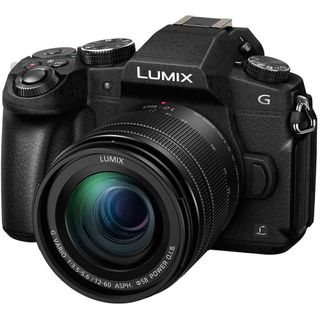
Compact camera vs mirrorless: Verdict
This really isn’t a case of one camera being better than the other. Mirrorless cameras may often have bigger sensors, interchangeable lens capabilities, and perhaps better handling. Yet, compact point-and-shoots have the advantage of being much more portable and a much easier operation while also offering a handful of advanced features you’ll find in APS-C and full-frame cameras.
So, it’s really more of a question of which camera is better for you, and our recommendation is this: if you’re looking for an easy-to-use camera to mostly take quick snapshots of your friends, family, life events, and best travel moments, a compact camera is most ideal. If, on the other hand, you plan on improving your photography skills or you want to have the versatility to take creative exposures, going mirrorless is the right way to go.
Liked this?
Michelle Rae Uy is a tech and travel journalist, editor and photographer with a bad case of wanderlust. She is a regular contributor for IGN, TechRadar and Business Insider, and has contributed to Thrillist, Paste Magazine, Nylon, Fodor's and Steve's Digicams. Living mainly in California with her adorable cats, she splits her time between Los Angeles, London and the rest of the world.
-
 Apple CarPlay update now available, brings a trio of great new features for free
Apple CarPlay update now available, brings a trio of great new features for freeIt’s time to update your iPhone because there’s more CarPlay waiting for you
By Chris Hall Published
-
 Here’s everything Tudor just announced at Watches and Wonders 2025
Here’s everything Tudor just announced at Watches and Wonders 2025Get ready for the all-new Black Bay 68, plus Pelagos Ultra and new Burgundy BB58
By Alistair Charlton Published
